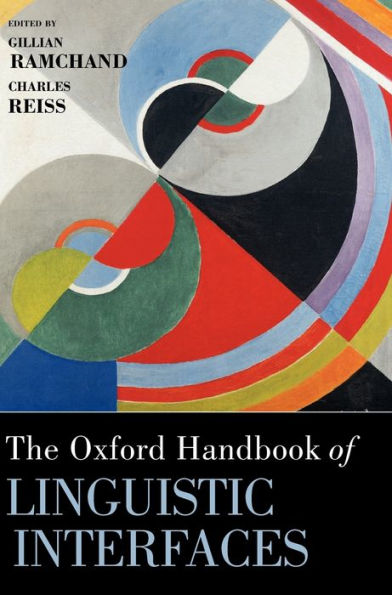The Oxford Handbook of Linguistic Interfaces
This state-of-the-art guide to some of the most exciting work in current linguistics explores how the core components of the language faculty interact. It examines how these interactions are reflected in linguistic and cognitive theory, considers what they reveal about the operations of language within the mind, and looks at their reflections in expression and communication. Leading international scholars present cutting-edge accounts of developments in the interfaces between phonetics, phonology, morphology, syntax, semantics, and pragmatics. They bring to bear a rich variety of methods and theoretical perspectives, focus on a broad array of issues and problems, and illustrate their arguments from a wide range of the world's languages.
After the editors' introduction to its structure, scope, and content, the book is divided into four parts. The first, Sound, is concerned with the interfaces between phonetics and phonology, phonology and morphology, and phonology and syntax. Part II, Structure, considers the interactions of syntax with morphology, semantics, and the lexicon, and explores the status of the word and its representional status in the mind. Part III, Meaning, revisits the syntax-semantics interface from the perspective of compositionality, and looks at issues concerned with intonation, discourse, and context. The authors in the final part of the book, General Architectural Concerns, examine work on Universal Grammar, the overall model of language, and linguistic and associated theories of language and cognition.
All scholars and advanced students of language will value this book, whether they are in linguistics, cognitive science, philosophy, artificial intelligence, computational science, or informatics.
1101083059
After the editors' introduction to its structure, scope, and content, the book is divided into four parts. The first, Sound, is concerned with the interfaces between phonetics and phonology, phonology and morphology, and phonology and syntax. Part II, Structure, considers the interactions of syntax with morphology, semantics, and the lexicon, and explores the status of the word and its representional status in the mind. Part III, Meaning, revisits the syntax-semantics interface from the perspective of compositionality, and looks at issues concerned with intonation, discourse, and context. The authors in the final part of the book, General Architectural Concerns, examine work on Universal Grammar, the overall model of language, and linguistic and associated theories of language and cognition.
All scholars and advanced students of language will value this book, whether they are in linguistics, cognitive science, philosophy, artificial intelligence, computational science, or informatics.
The Oxford Handbook of Linguistic Interfaces
This state-of-the-art guide to some of the most exciting work in current linguistics explores how the core components of the language faculty interact. It examines how these interactions are reflected in linguistic and cognitive theory, considers what they reveal about the operations of language within the mind, and looks at their reflections in expression and communication. Leading international scholars present cutting-edge accounts of developments in the interfaces between phonetics, phonology, morphology, syntax, semantics, and pragmatics. They bring to bear a rich variety of methods and theoretical perspectives, focus on a broad array of issues and problems, and illustrate their arguments from a wide range of the world's languages.
After the editors' introduction to its structure, scope, and content, the book is divided into four parts. The first, Sound, is concerned with the interfaces between phonetics and phonology, phonology and morphology, and phonology and syntax. Part II, Structure, considers the interactions of syntax with morphology, semantics, and the lexicon, and explores the status of the word and its representional status in the mind. Part III, Meaning, revisits the syntax-semantics interface from the perspective of compositionality, and looks at issues concerned with intonation, discourse, and context. The authors in the final part of the book, General Architectural Concerns, examine work on Universal Grammar, the overall model of language, and linguistic and associated theories of language and cognition.
All scholars and advanced students of language will value this book, whether they are in linguistics, cognitive science, philosophy, artificial intelligence, computational science, or informatics.
After the editors' introduction to its structure, scope, and content, the book is divided into four parts. The first, Sound, is concerned with the interfaces between phonetics and phonology, phonology and morphology, and phonology and syntax. Part II, Structure, considers the interactions of syntax with morphology, semantics, and the lexicon, and explores the status of the word and its representional status in the mind. Part III, Meaning, revisits the syntax-semantics interface from the perspective of compositionality, and looks at issues concerned with intonation, discourse, and context. The authors in the final part of the book, General Architectural Concerns, examine work on Universal Grammar, the overall model of language, and linguistic and associated theories of language and cognition.
All scholars and advanced students of language will value this book, whether they are in linguistics, cognitive science, philosophy, artificial intelligence, computational science, or informatics.
210.0
Out Of Stock
5
1

The Oxford Handbook of Linguistic Interfaces
688
The Oxford Handbook of Linguistic Interfaces
688
210.0
Out Of Stock

Product Details
| ISBN-13: | 9780199247455 |
|---|---|
| Publisher: | Oxford University Press |
| Publication date: | 05/03/2007 |
| Series: | Oxford Handbooks |
| Pages: | 688 |
| Product dimensions: | 9.77(w) x 6.90(h) x 1.73(d) |
About the Author
From the B&N Reads Blog
